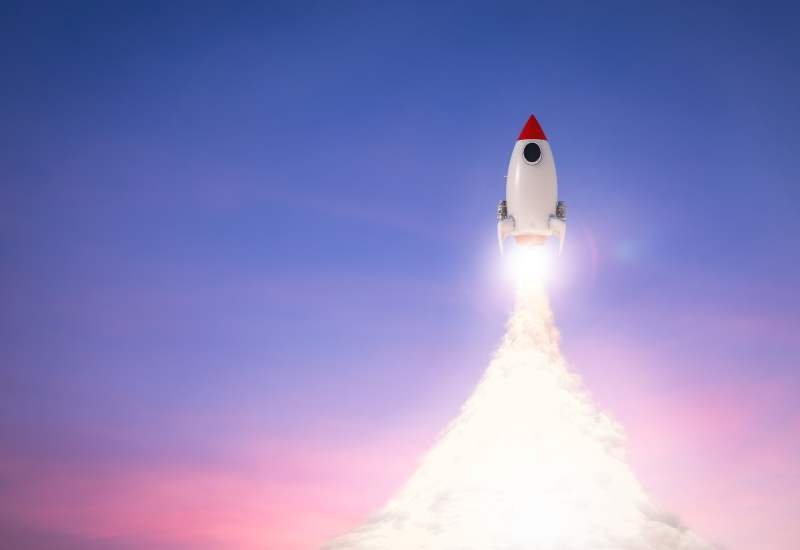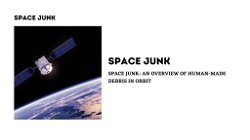Space Shuttle is Rocket-Propelled Vehicle: Designed to Enter Orbit Around the Earth
Swati Mandana
. 2 min read
The Space Shuttle, also known as the Space Transportation System, is a rocket-launched vehicle that was designed to go into orbit around the Earth, to transport people and cargo to and from orbiting spacecraft, and to glide to a runway landing on its return to the surface of the Earth. The Space Shuttle was developed by the United States National Aeronautics and Space Administration (NASA) (NASA). It was formerly known as the Space Transportation System (STS), and it made its maiden voyage into space on April 12, 1981. The legacy of the Space Shuttle program stands as a testament to the ingenuity and perseverance of the developers who dedicated their expertise to advancing human exploration of the cosmos.

Exploring the History of the Space Shuttle Program
1. Enterprise: The Space Test Shuttle that Paved the Way for the Space Shuttle Program
Before the first launch of the Space Shuttle Columbia in 1981, NASA conducted a series of performance tests with a prototype known as Enterprise. These tests were carried out in preparation for the launch of the Columbia. Enterprise, our first look at what a possible future spaceship might actually look like, took its name from a vessel that appeared in the Star Trek television series.
2. Columbia Disaster: Tragedy Strikes the Space Shuttle Program
On January 16, 2003, the shuttle Columbia embarked on its 28th mission, which was designated STS-107. In 1981, Columbia was the vehicle that successfully completed the first space shuttle mission. The STS-107 mission was dedicated to conducting a variety of experiments that needed to take place in a microgravity environment.
3. Challenger Disaster: Remembering the Crew of STS-51L
The launch of the second Tracking and Data Relay Satellite was the primary objective of the mission 51-L of the Space Shuttle (TDRS-B). It also carried the Spartan Halley spacecraft, which was a small satellite that was going to be released by Challenger and then picked up two days later after observing Halley's Comet during its closest approach to the Sun. The Challenger catastrophe was an explosion that occurred on the United States space shuttle orbiter Challenger on January 28, 1986.
4. Discovery: The Most Flown Space Shuttle in NASA's History
Even though it was the third shuttle to launch into space, Discovery ended up being the shuttle that flew the most missions overall: 39. Discovery was the shuttle that was used for both of the "return to flight" missions that were conducted after the disasters that befell Challenger and Columbia. During their 39 trips into space, crews aboard the Discovery were responsible for launching the Hubble Space Telescope.
5. Space Shuttle Atlantis: The Final Flight of the Space Shuttle Program
The Space Shuttle Atlantis was an instrumental vehicle in the exploration of space by the United States of America over the past 30 years. The space shuttle Atlantis was the final vehicle to be launched as part of the Space Shuttle Program. On July 8, 2011, the Shuttle took off from Kennedy Space Station in Florida in order to complete its final mission, which was to deliver supplies to the International Space Station.
6. Endeavour: From Space Shuttle to Museum Exhibit
After completing its very last mission for NASA in 2011, the space shuttle Endeavour is now preparing for its new life as a museum exhibit at the California Science Center in Los Angeles. During its 19-year run in space, the space shuttle Endeavour traveled close to 123 million miles (198 million kilometers) and completed more than 4,600 orbits of the Earth.
Conclusion
The Space Shuttle program was a significant part of NASA's history, providing a reusable means of transportation to and from space. The program helped launch and service satellites, construct and maintain the International Space Station, and conduct scientific research in space. However, the program was not without its tragedies, as both the Challenger and Columbia disasters resulted in the loss of crew members. Despite this, the program continued until 2011, with the Space Shuttle Atlantis completing its final mission to the International Space Station.
More Stories from
Chandrayaan-3: India's Ambitious Lunar Mission for Scientific Exploration
Chandrayaan-3, India's third lunar mission led by ISRO, aims to overcome past challenges and demonstrate soft landing capabilities on the Moon.
Space Junk: An Overview of Human-Made Debris in Orbit
Space Junk: an overview of the problem and proposed solutions
Exploring the Final Frontier: A Glimpse into the World of Space Research
From probing distant galaxies with space telescopes to charting the potential for human life on other planets, this article provides a glimpse into the evolving field of space research.
Connected Cosmos: Embracing the Future of Space Exploration with Video Chat
Discover the potential for human colonization of other planets, breakthrough propulsion systems, and the expansion of our knowledge of the universe through space-based astronomy.
The Remarkable Lives of Katherine Johnson: From Child Prodigy to NASA Trailblazer
This article highlights the life and achievements of Katherine Johnson, a trailblazing mathematician








.png?width=40&aspect_ratio=1:1)


